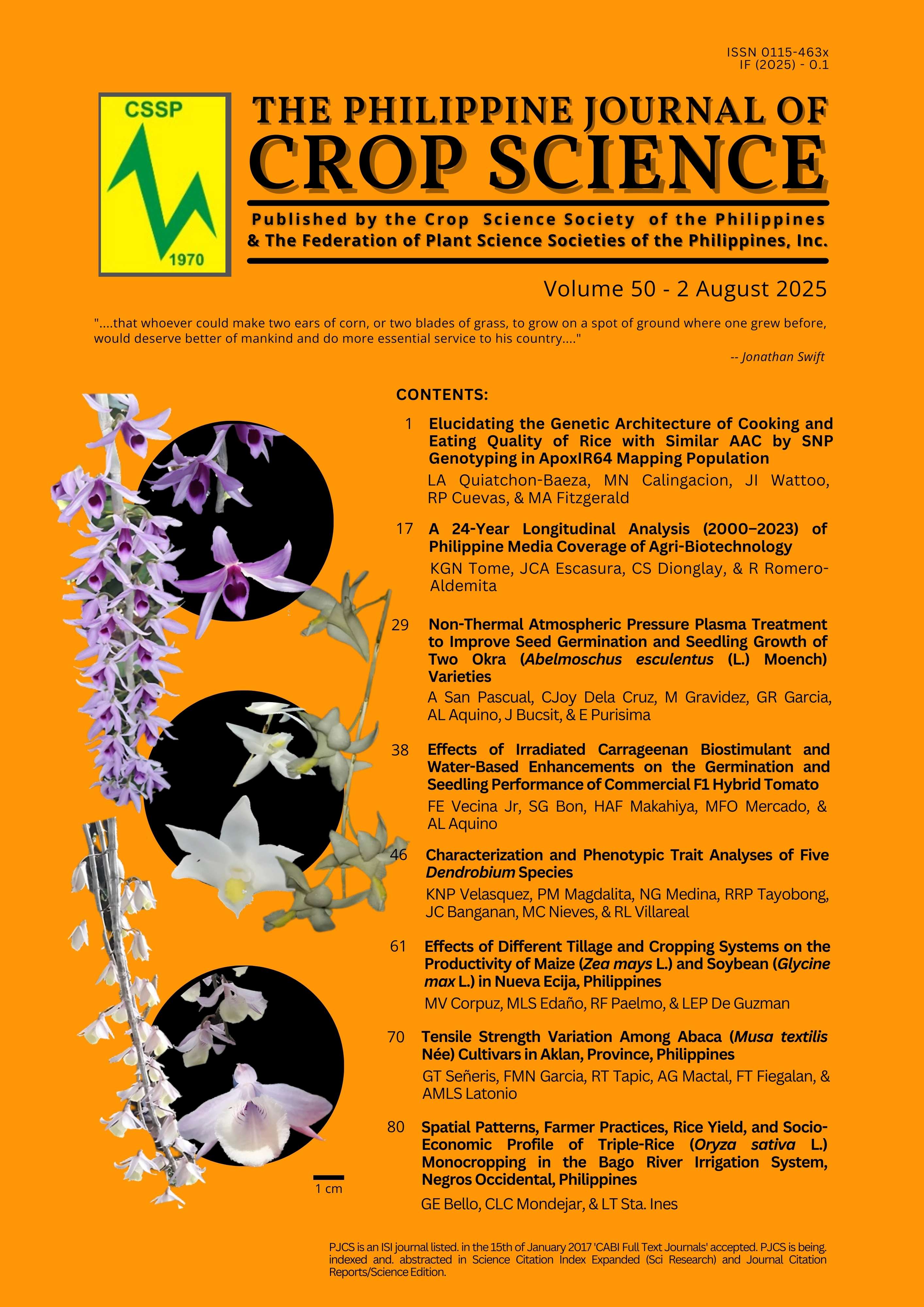Spatial Patterns, Farmer Practices, Rice Yield, and Socio-Economic Profile of Triple-Rice (Oryza sativa L.) Monocropping in the Bago River Irrigation System, Negros Occidental, Philippines
Abstract
The triple-crop rice monocropping system is commonly practiced in areas covered by the Bago River Irrigation System (BRIS) in Negros Occidental, Philippines. The study aimed to assess the spatial extent of triple-rice cropping in the province and BRIS and evaluate farming practices, rice yield, and the economic status of local farmers to identify information needs and challenges. Maps generated accounted for 90% accuracy, and results showed that Bago City and Valladolid had the largest third-crop rice areas. A survey was conducted with 240 farmer respondents from six Irrigators’ Associations (IAs) of BRIS, using stratified sampling, providing a 95% confidence level with a 5% margin of error. The survey revealed that 93.3% of farmers grow five rice crops every two years or practice one to two rice crops per year, while 4.6% plant rice in all three cropping seasons over the two years. Early-maturing rice varieties and direct-seeding methods were commonly used by farmers to shorten the cropping period per season, enabling the triple-crop system. The study’s objectives aimed to provide insights that can guide sustainable farming practices, improve policy decisions, and support increased rice production capacity to address the food security issues in the region.


